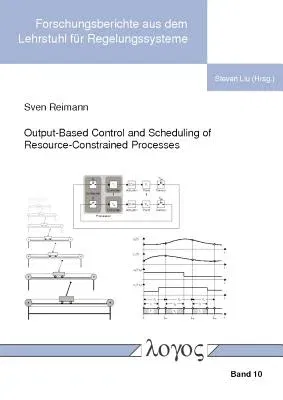Modern control systems are usually realized as embedded systems. This
typically leads to resource-constrained control systems due to
constraints on computing speed, memory size or communication bandwidth.
In this thesis, scheduling and control strategies as well as
event-triggered control strategies are addressed for handling the
limited computation and communication resources. All proposed strategies
are designed in a way, such that they can be realized based on output
information. Part I focuses on scheduling and control design methods for
distributing efficiently the limited computation and communication
resources. First, an integrated control and scheduling design is
proposed for controlling several plants over one share communication
network, which assumes full state measurement. By including a switched
observer the control and scheduling can be realized based on output
information. Second, a strategy for scheduling a set of PI control tasks
with limited computation resources is developed. The focus lies on the
scheduling of PI control tasks with low computational overhead. Both
presented strategies are online scheduling algorithms, where the
scheduling decision is made based on output-feedback information of the
plants. This allows a reactiveness to disturbances and reference changes
and, hence, an improved control performance compared with offline
scheduling algorithms. In Part II, a novel event-triggered PI control
concept is developed for setpoint tracking problems. The focus lies on
reducing the resource utilization, especially the communication over the
feedback link, while maintaining a certain level of performance. An
event-triggered PI control strategy is proposed, where both the
event-triggering condition and the PI controller are realized
periodically, such an implementation can be easily realized in a
standard time-sliced embedded software architecture. Further, a control
synthesis is presented, which allows to design the control parameters
taking the event-triggered implementation into account. All proposed
strategies in Part I and Part II are evaluated by simulations and
experimental studies in comparison with related approaches from
literature, to demonstrate the effectiveness.

